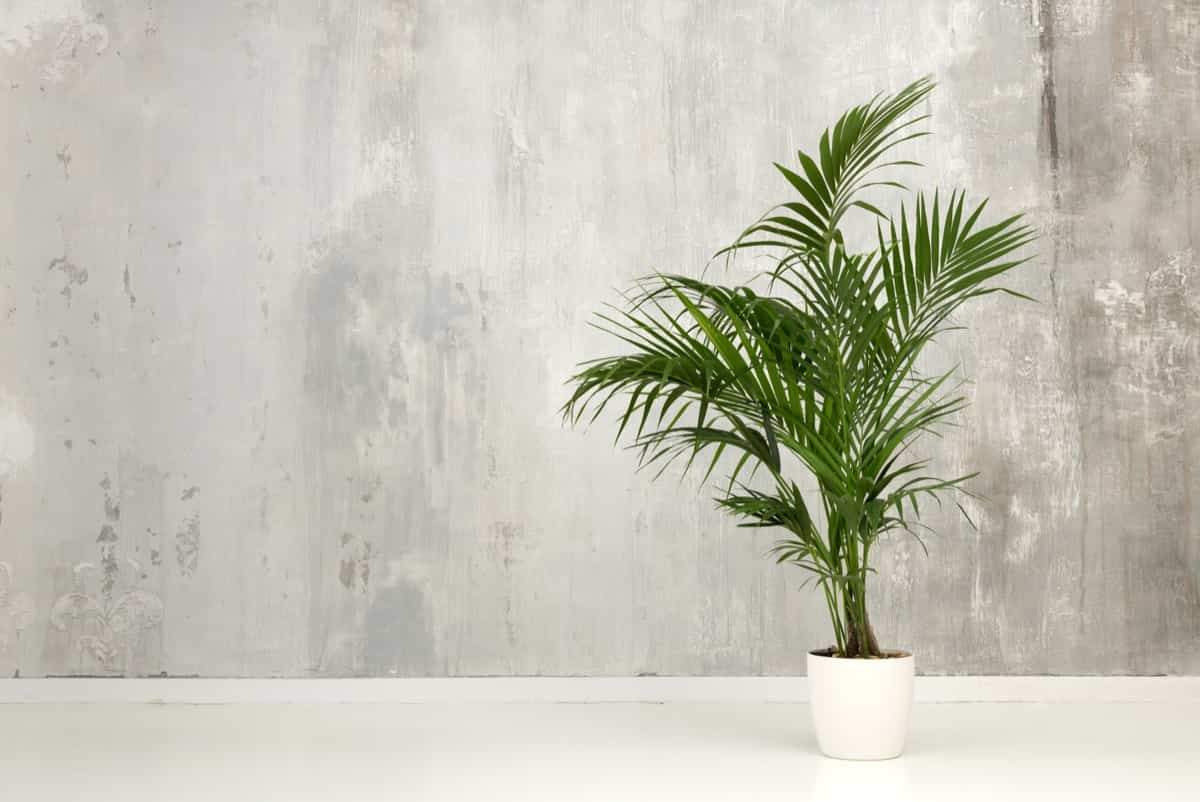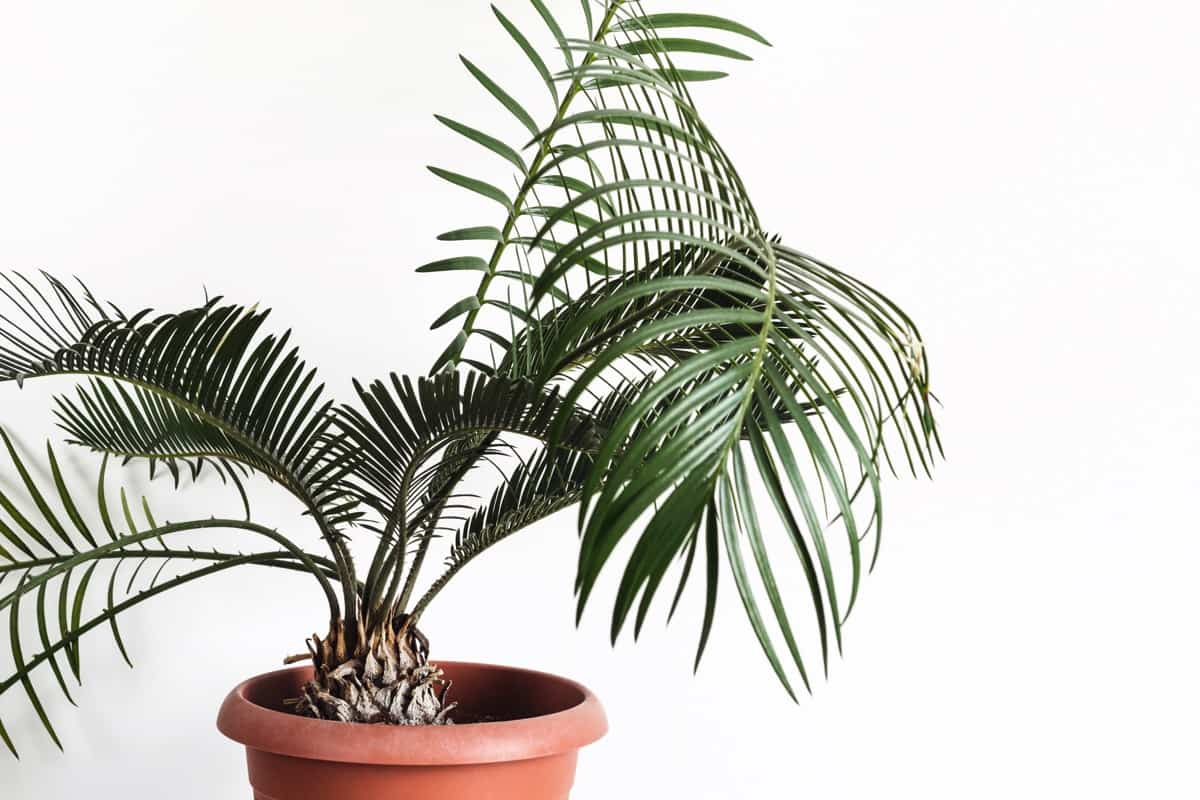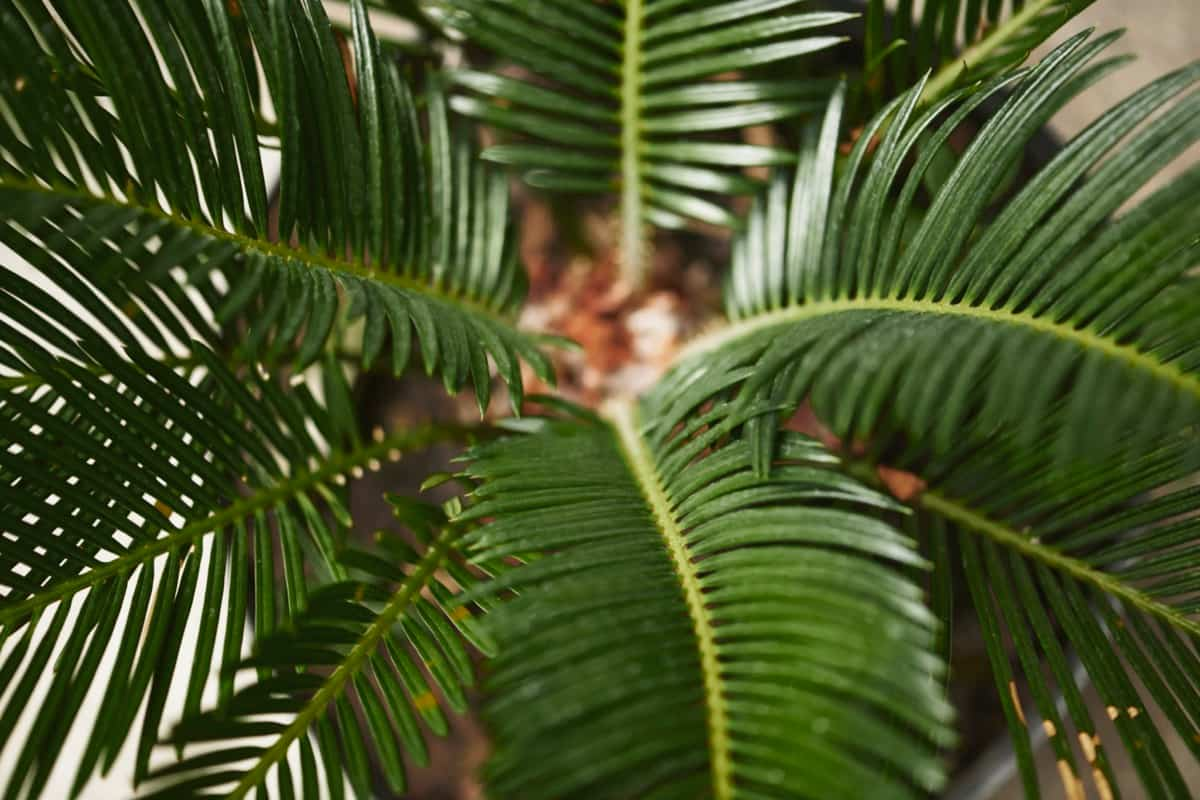Palm plants are popular for indoor and outdoor landscaping due to their elegant appearance and ability to thrive in various environments. Whether you have palm plants indoors or outdoors, proper care is required to ensure their health and longevity. This article will provide comprehensive guidelines for indoor and outdoor palm plant care.

Potted Palm Care
Understanding the Different Types of Potted Palms: a Guide to Indoor and Outdoor Varieties
Potted palms are a popular choice for indoor and outdoor settings due to their elegant appearance and low maintenance requirements. Indoor varieties, such as the Areca palm and the Lady’s palm, are suitable for adding a touch of tropical beauty to any room. These palms thrive in bright, indirect light and require regular watering.
Outdoor varieties, like the Mexican Fan palm and the Windmill palm, can withstand varying weather conditions and create a lush, tropical ambiance in gardens and landscapes. These palms are generally low-maintenance and can tolerate full sun or partial shade.
Choosing the Right Pot and Soil for Your Potted Palm: Essential Considerations for Optimal Growth
Choosing the right pot and soil for your potted palm is essential for optimal growth. When selecting a pot, consider the size and material. The pot must have sufficient drainage holes to prevent waterlogging. A pot slightly larger than the palm’s root ball allows room for growth without overwhelming the plant.
As for the soil, a well-draining mix is crucial. Use a combination of potting soil, perlite, and sand to promote proper drainage. Avoid heavy, compacted soils that retain moisture. Providing the right pot and soil conditions will create a healthy environment for your potted palm to thrive and grow.
Providing Adequate Light for Your Potted Palm: Balancing Sunlight and Shade Requirements
- Providing adequate light is crucial for the health and growth of your potted palm.
- Balancing sunlight and shade requirements is essential to ensure optimal conditions for your plant.
- Potted palms thrive in bright, indirect light. Place your palm near a window with filtered sunlight, or use sheer curtains to reduce direct exposure.
- Avoid placing it in direct sunlight during peak hot periods of the day, as it can scorch the leaves. Monitor the light conditions throughout the day and adjust the positioning of your palm accordingly.
- Remember to rotate the pot periodically to ensure even exposure to light.
- By maintaining the right balance of sunlight and shade, you can promote the well-being of your potted palm.
Watering Techniques for Potted Palms: Finding the Right Balance to Prevent Under or Overwatering
For indoor potted palms, the key is to monitor the moisture level of the soil. Before watering, check if the top inch of the soil is dry. If it is damp, it means the plant has enough moisture and does not require watering. On the other hand, if the soil feels dry, water the plant. Ensure you water until the excess water escapes from the bottom of the pot. Remember to empty the saucer to prevent water from accumulating.
In case you missed it: Types of Outdoor Palm Plants: Best for Pots and the Ground

Outdoor potted palms have slightly different watering needs. They are exposed to more sunlight and wind, which causes the soil around the plant to dry out faster. It is crucial to check the moisture level regularly and adjust the watering accordingly. During hot summer, you may need to water outdoor potted palms more frequently to compensate for evaporation and transpiration.
Temperature and Humidity Requirements for Potted Palms: Creating a Suitable Environment
Temperature and humidity are vital factors to consider when creating a suitable environment for potted palms. These tropical plants thrive in warm temperatures ranging from 21°C to 29°C. However, they can tolerate temperatures as low as 15°C and as high as 30°C for short periods. Avoid sudden temperature fluctuations, as this can stress the plants.
In terms of humidity, potted palms prefer moderately high humidity levels, ideally between 40% and 60%. You can use a humidifier to maintain adequate humidity or place the plant on a tray filled with water and pebbles. Misting the leaves occasionally can also help increase humidity.
Fertilizing Your Potted Palm: Nutrient Needs and Application Methods
- Palms require a balanced fertilizer with nitrogen, phosphorus, and potassium (NPK) ratio of 3:1:3 or 3:1:2.5.
- Choose a slow-release fertilizer specifically formulated for palms. Apply the fertilizer evenly on the soil surface, avoiding direct contact with the palm’s trunk.
- Water the palm thoroughly after fertilizing to prevent root burn. During the growing season, fertilize every three months.
- Adjust the frequency and amount for specific palm species and environmental conditions.
- Regular fertilization will promote vibrant foliage and robust growth.
Pruning and Trimming Potted Palms: Maintaining a Healthy and Attractive Appearance
- Removing any dead or yellowing fronds is important when it comes to pruning. This helps redirect the plant’s energy toward new growth.
- Trimming involves shaping the palm by cutting back overly long fronds. This helps maintain a balanced and aesthetically pleasing look.
- Additionally, pruning and trimming can help prevent diseases and pests from spreading.
Managing Common Pests and Diseases in Potted Palms: Prevention and Treatment Strategies
Prevention measures include providing proper lighting, watering, and drainage conditions to create an environment that discourages pests and diseases. Regularly inspecting the plants for symptoms of infestation or disease is crucial for early detection and intervention. Also, maintaining clean pots and soil and practicing good hygiene can prevent the spread of pests and diseases.
In case you missed it: How to Treat Brown Spots on Palm Tree Leaves Naturally: Causes, Fix With Effective Home Remedies

When it comes to treatment, there are various options available. Organic insecticidal soaps or neem oil can target common pests like aphids, spider mites, or mealybugs for pest control. Fungal or bacterial diseases can be addressed with appropriate fungicides or bactericides, following the instructions provided by the manufacturer.
Repotting Your Potted Palm: When, Why, and How to Transplant for Continued Growth
- Generally, palms should be repotted every 2-3 years or when the roots become overcrowded. This allows the plant to access fresh nutrients and promotes better drainage.
- Transplanting is typically done in spring or early summer when the palm is actively growing.
- When repotting, pick a pot slightly larger than the current one and use well-draining soil.
- Gently remove the palm from its old pot, loosen the root ball, and place it in the new pot.
- Fill the gaps with fresh soil, firm it gently, and water thoroughly.
- Ensure adequate light and regular watering to help your potted palm thrive.
Winter Care for Outdoor Potted Palms: Protecting Against Cold Temperatures and Frost
Bring them indoors: If possible, move your potted palms to a sheltered location, such as a greenhouse or a covered patio. This will provide them with additional protection against freezing temperatures.
- Wrap them up: For palms that are too large to move indoors, wrap the pots with insulating materials like burlap or bubble wrap. This will retain heat and prevent the roots from freezing.
- Mulch the soil: Apply a thick layer of mulch around the palm tree’s base. This will help to insulate the roots and keep them warm during the winter.
- Water sparingly: Winter is a time to reduce watering since palms need less water when dormant. The roots of plants can rot if they are overwatered.
- Provide additional heat: Provide supplemental heat during extreme cold snaps using frost blankets or outdoor heaters. When using outdoor heaters, follow safety guidelines.
In case you missed it: Date Palm Fertilizer Requirements and Recommendations: Best Practices for Optimal Yield

Conclusion
By following these care guidelines, you can ensure the well-being of your indoor and outdoor palm plants. Regularly inspect for signs of pests and diseases in your palm trees and take action, if necessary, as soon as you notice them. The right care will ensure that your palm plants thrive and add a touch of tropical beauty to your indoor or outdoor space.
- Feed Your Flock for Less: Top 10 Tips to Save on Chicken Feed
- Ultimate Guide to Ossabaw Island Hog: Breeding, Raising, Diet, and Care
- Hatching Answers: The Top 10 Reasons Your Chickens Aren’t Laying Eggs
- Eggs and Economics: Breaking Down the Cost of Raising Backyard Chickens
- Defend Your Greens: Proven Methods to Keep Iguanas Out of Your Garden
- Ultimate Guide to Cinnamon Queen Chicken: A Comprehensive Guide for Beginners
- Ultimate Guide to California Tan Chicken: Breeding, Raising, Diet, Egg-Production and Care
- Ultimate Guide to Marsh Daisy Chicken: Breeding, Raising, Diet, and Care
- 10 Types of Chicken Farming Businesses You Can Start for Profits